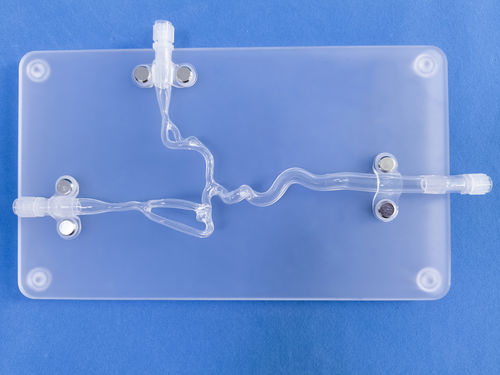
#Industry News
What precautions should be taken after intracranial aneurysm embolization
Model:Blood Vessel Model
Intracranial aneurysm embolization refers to the treatment of intracranial aneurysms through vascular interventional embolization surgery. Intracranial aneurysms are caused by abnormal protrusions of the vascular wall, and there is a risk of rupture and bleeding, so treatment should be carried out as soon as possible after diagnosis. In clinical practice, intravascular embolization interventional surgery can be selected to treat intracranial aneurysms, which causes relatively small trauma and has the possibility of cure. It is mainly performed by puncturing the radial artery or femoral artery, inserting a catheter, introducing the catheter into the vicinity of the aneurysm, and then filling the coil through the catheter to the location of the aneurysm, so as to achieve the effect of treating intracranial aneurysms.
Intracranial aneurysm embolization can be treated with interventional treatment, and sometimes it is necessary to combine stents. After treatment or outside the blood vessel, the aneurysm is clamped with an aneurysm clip to prevent blood flow from entering the aneurysm, which can prevent the aneurysm from rupture and bleeding.
Postoperative care:
1. General care routine, the same as postoperative care after cerebral angiography.
2. Closely monitor body temperature, pulse, respiration, blood pressure, pupils, and maintain blood pressure (120~130)/(80~90) mmHg to increase cerebral perfusion and prevent brain tissue ischemia and hypoxia.
3. Medication and care: Some anticoagulant and antispasmodic drugs are commonly used after surgery to reduce and prevent complications.





